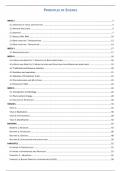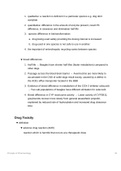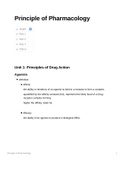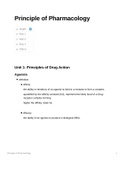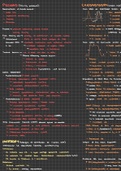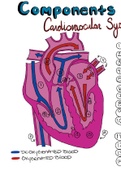Royal Veterinary College (RVC)
Latest uploads at Royal Veterinary College (RVC). Looking for notes at Royal Veterinary College (RVC)? We have lots of notes, study guides and revision notes available for your school.
-
26
- 0
-
2
Courses at Royal Veterinary College (RVC)
Notes available for the following courses at Royal Veterinary College (RVC)
Latest notes & summaries Royal Veterinary College (RVC)
Royal veterinary college Locomotor module - full content notes includes diagrams, images etc 1.2 - COMPARATIVE LOCOMOTION 1.3 - BONE AND SKELETON 1.4 - EVOLUTION AS A BASIS FOR DIVERSITY 1.5 - JOINTS 1.6 - MUSCLE AND TENDON 1.7A - TISSUE ADAPTATION (CONNECTIVE) 1.7B - TISSUE ADAPTATION (BONE) 2.3 - MUSCLE CONTRACTION 2.4 – MUSCLE CONTRACTION 2.5 - ANIMAL DESIGN 2.6 – FORELIMB 2.7 – HINDLIMB 2.8 - GAIT AND MUSCLE FUNCTION
Royal veterinary college POS module Lectures covered; 2.1 OVERVIEW OF TISSUE ARCHITECTURE 2.2 PROTEIN STRUCTURE 2.2 ENZYMES 2.3 Genes, DNA, RNA 2.4 GENE FUNCTION - TRANSCRIPTION 2.4 GENE FUNCTION : TRANSLATION 3.1 MICROSCOPE SKILLS 4.1A GENES AND GENETICS 1: PRINCIPLES OF BASIC INHERITANCE 4.1B GENES AND GENETICS 2: MODIFICATIONS AND DEVIATIONS FROM MENDELIAN INHERITANCE 4.2 Traditional and Genomic selection 4.3 Evolution and speciation 4.2 Selection of Productio...
Royal Veterinary college BVETMED1 CVRS Module - Full content Lectures covered; DEFENSIVE BARRIERS INTRODUCTION TO THE CARDIOVASCULAR SYSTEM HEARTBEAT AND THE CARDIAC CYCLE REGULATION OF THE CARDIOVASCULAR SYSTEM I REGULATION OF THE CARDIOVASCULAR SYSTEM II STRUCTURE OF LUNGS AND RESPIRATORY TRACT GAS EXCHANGE AND GAS CARRIAGE
Full lecture content of the Alimentary module of Royal veterinary college (RVC) Includes; Definitions Images and diagrams Colour coded modules Contents page and linked headings Lectures covered include; 1.1 INTRODUCTION AND OVERVIEW OF THE GIT 1.2 PROTEIN SORTING AND SECRETION 1.3 REGULATION OF THE GIT- SECRETION AND MOTILITY 1.3 REGULATION OF THE GIT – MOTILITY 1.4 DEVELOPMENT OF THE GASTROINTESTINAL TRACT 1.5 DIGESTION & ABSORPTION 2.1 HEADGUT, PHARYNX, LARYNX 2.2 ...
To explain by using relevant examples how drugs affect physiological and pathological processes in mammals and how their actions can be efficacious in more than one condition. The related aspect of drug selectivity and drug interactions will be also taught as well as demonstrated how knowledge of drug pharmacokinetics and pharmacodynamics is used to design appropriate dosing schedules
To explain and demonstrate, using selected examples, how knowledge of physiology and pathophysiology leads to the identification of targets and their druggability, how molecular events can lead to selectivity of drugs, avoid toxicity and deliver improved safety and efficacy.
To explain and demonstrate the principles of how drugs act in the body (pharmacodynamics), how the body acts on drugs (pharmacokinetics) and the origin of unwanted effects (adverse drug reactions and drug toxicity). Along with this, fundamental terminology, interaction and relationship between agonists/antagonists and their target molecules will be also discerned.
This summary provides a anki style question bank with answer for the pricniple of pharmacology. The pdf also include essay type question answers and illustrations for easy understanding.
A summarised booklet of all the cardiovascular lectures in second year veterinary medicine at the RVC. Each summary covers the learning objectives provided by lecturers in a clear and concise manner including helpful diagrams.
Reviews the basic components of the cardiovascular system; the different regions of the heart and the vascular tree.


